Yi-Chun Hung
Department of Electrical and Computer Engineering, University of California, Los Angeles
Homeostatic Adaptation of Optimal Population Codes under Metabolic Stress
Jul 10, 2025Abstract:Information processing in neural populations is inherently constrained by metabolic resource limits and noise properties, with dynamics that are not accurately described by existing mathematical models. Recent data, for example, shows that neurons in mouse visual cortex go into a "low power mode" in which they maintain firing rate homeostasis while expending less energy. This adaptation leads to increased neuronal noise and tuning curve flattening in response to metabolic stress. We have developed a theoretical population coding framework that captures this behavior using two novel, surprisingly simple constraints: an approximation of firing rate homeostasis and an energy limit tied to noise levels via biophysical simulation. A key feature of our contribution is an energy budget model directly connecting adenosine triphosphate (ATP) use in cells to a fully explainable mathematical framework that generalizes existing optimal population codes. Specifically, our simulation provides an energy-dependent dispersed Poisson noise model, based on the assumption that the cell will follow an optimal decay path to produce the least-noisy spike rate that is possible at a given cellular energy budget. Each state along this optimal path is associated with properties (resting potential and leak conductance) which can be measured in electrophysiology experiments and have been shown to change under prolonged caloric deprivation. We analytically derive the optimal coding strategy for neurons under varying energy budgets and coding goals, and show how our method uniquely captures how populations of tuning curves adapt while maintaining homeostasis, as has been observed empirically.
Spectrum from Defocus: Fast Spectral Imaging with Chromatic Focal Stack
Mar 26, 2025



Abstract:Hyperspectral cameras face harsh trade-offs between spatial, spectral, and temporal resolution in an inherently low-photon regime. Computational imaging systems break through these trade-offs with compressive sensing, but require complex optics and/or extensive compute. We present Spectrum from Defocus (SfD), a chromatic focal sweep method that recovers state-of-the-art hyperspectral images with a small system of off-the-shelf optics and < 1 second of compute. Our camera uses two lenses and a grayscale sensor to preserve nearly all incident light in a chromatically-aberrated focal stack. Our physics-based iterative algorithm efficiently demixes, deconvolves, and denoises the blurry grayscale focal stack into a sharp spectral image. The combination of photon efficiency, optical simplicity, and physical modeling makes SfD a promising solution for fast, compact, interpretable hyperspectral imaging.
Making the Invisible Visible: Toward High-Quality Terahertz Tomographic Imaging via Physics-Guided Restoration
Apr 28, 2023Abstract:Terahertz (THz) tomographic imaging has recently attracted significant attention thanks to its non-invasive, non-destructive, non-ionizing, material-classification, and ultra-fast nature for object exploration and inspection. However, its strong water absorption nature and low noise tolerance lead to undesired blurs and distortions of reconstructed THz images. The diffraction-limited THz signals highly constrain the performances of existing restoration methods. To address the problem, we propose a novel multi-view Subspace-Attention-guided Restoration Network (SARNet) that fuses multi-view and multi-spectral features of THz images for effective image restoration and 3D tomographic reconstruction. To this end, SARNet uses multi-scale branches to extract intra-view spatio-spectral amplitude and phase features and fuse them via shared subspace projection and self-attention guidance. We then perform inter-view fusion to further improve the restoration of individual views by leveraging the redundancies between neighboring views. Here, we experimentally construct a THz time-domain spectroscopy (THz-TDS) system covering a broad frequency range from 0.1 THz to 4 THz for building up a temporal/spectral/spatial/ material THz database of hidden 3D objects. Complementary to a quantitative evaluation, we demonstrate the effectiveness of our SARNet model on 3D THz tomographic reconstruction applications.
Terahertz Spatio-Temporal Deep Learning Computed Tomography
May 03, 2022
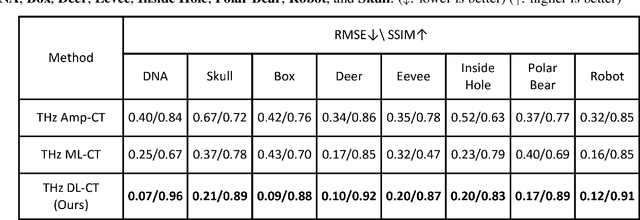
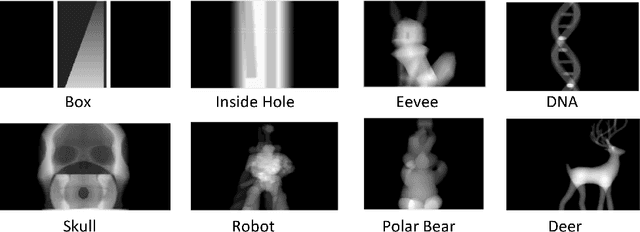
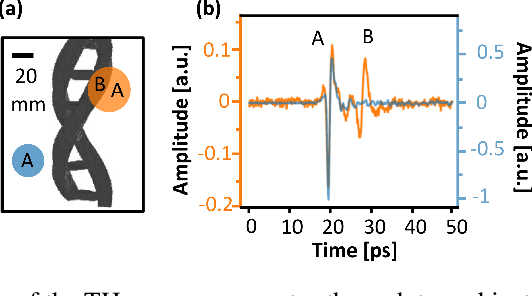
Abstract:Terahertz computed tomography (THz CT) has drawn significant attention because of its unique capability to bring multi-dimensional object information from invisible to visible. However, current physics-model-based THz CT modalities present low data use efficiency on time-resolved THz signals and low model fusion extensibility, limiting their application fields' practical use. In this paper, we propose a supervised THz deep learning computed tomography (THz DL-CT) framework based on time-domain information. THz DL-CT restores superior THz tomographic images of 3D objects by extracting features from spatio-temporal THz signals without any prior material information. Compared with conventional and machine learning based methods, THz DL-CT delivers at least 50.2%, and 52.6% superior in root mean square error (RMSE) and structural similarity index (SSIM), respectively. Additionally, we have experimentally demonstrated that the pretrained THz DL-CT model can generalize to reconstruct multi-material systems with no prerequisite information. THz CT through the DL data fusion approach provides a new pathway for non-invasive functional imaging in object investigation.
Physics-guided Terahertz Computational Imaging
Apr 30, 2022
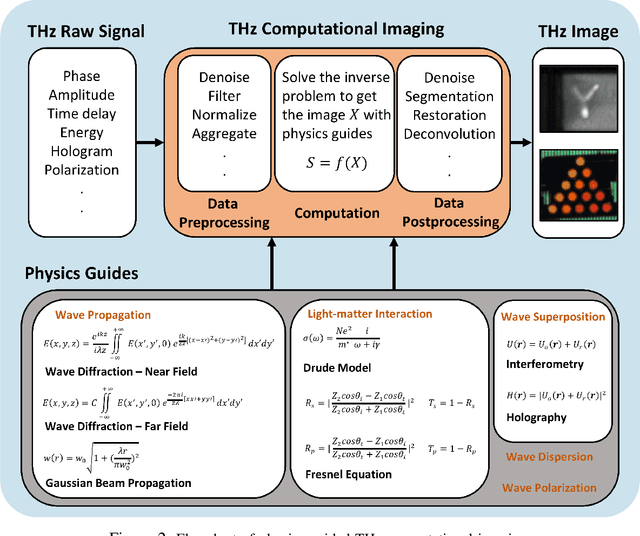
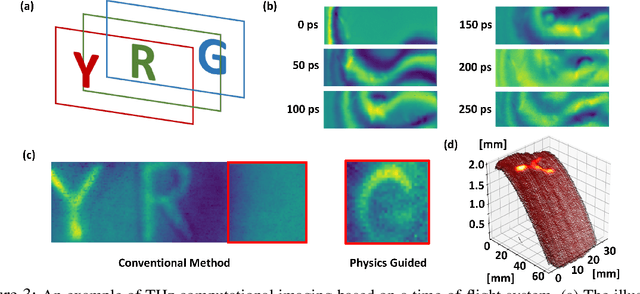
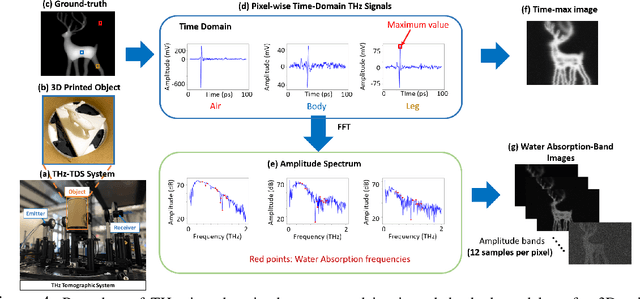
Abstract:Visualizing information inside objects is an ever-lasting need to bridge the world from physics, chemistry, biology to computation. Among all tomographic techniques, terahertz (THz) computational imaging has demonstrated its unique sensing features to digitalize multi-dimensional object information in a non-destructive, non-ionizing, and non-invasive way. Applying modern signal processing and physics-guided modalities, THz computational imaging systems are now launched in various application fields in industrial inspection, security screening, chemical inspection and non-destructive evaluation. In this article, we overview recent advances in THz computational imaging modalities in the aspects of system configuration, wave propagation and interaction models, physics-guided algorithm for digitalizing interior information of imaged objects. Several image restoration and reconstruction issues based on multi-dimensional THz signals are further discussed, which provides a crosslink between material digitalization, functional property extraction, and multi-dimensional imager utilization from a signal processing perspective.
Polarization Multiplexed Diffractive Computing: All-Optical Implementation of a Group of Linear Transformations Through a Polarization-Encoded Diffractive Network
Mar 25, 2022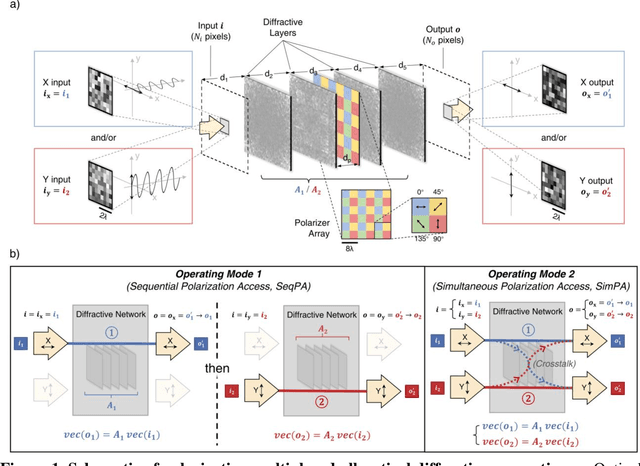
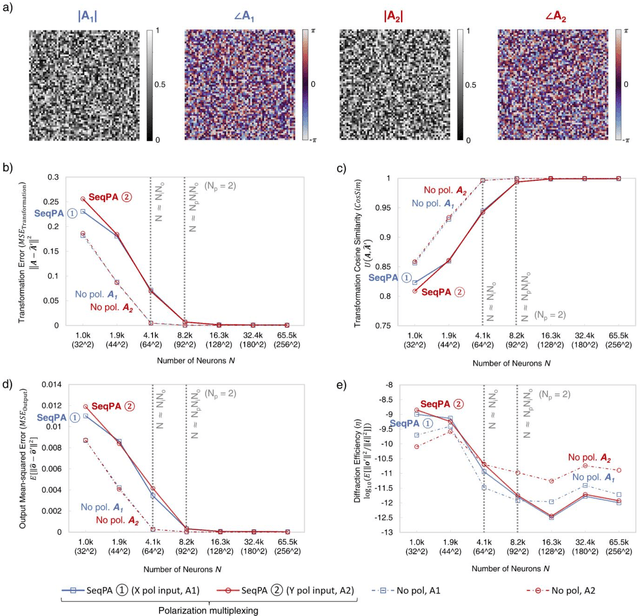
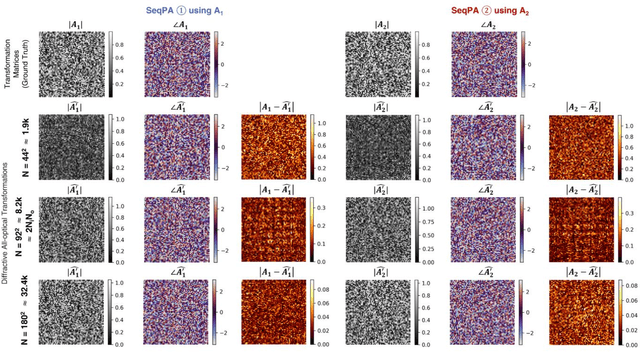
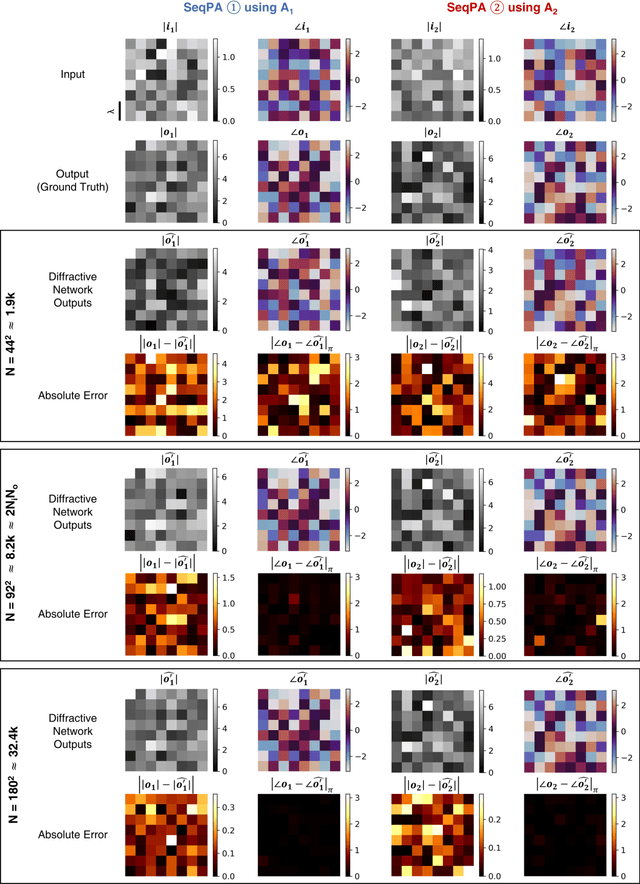
Abstract:Research on optical computing has recently attracted significant attention due to the transformative advances in machine learning. Among different approaches, diffractive optical networks composed of spatially-engineered transmissive surfaces have been demonstrated for all-optical statistical inference and performing arbitrary linear transformations using passive, free-space optical layers. Here, we introduce a polarization multiplexed diffractive processor to all-optically perform multiple, arbitrarily-selected linear transformations through a single diffractive network trained using deep learning. In this framework, an array of pre-selected linear polarizers is positioned between trainable transmissive diffractive materials that are isotropic, and different target linear transformations (complex-valued) are uniquely assigned to different combinations of input/output polarization states. The transmission layers of this polarization multiplexed diffractive network are trained and optimized via deep learning and error-backpropagation by using thousands of examples of the input/output fields corresponding to each one of the complex-valued linear transformations assigned to different input/output polarization combinations. Our results and analysis reveal that a single diffractive network can successfully approximate and all-optically implement a group of arbitrarily-selected target transformations with a negligible error when the number of trainable diffractive features/neurons (N) approaches N_p x N_i x N_o, where N_i and N_o represent the number of pixels at the input and output fields-of-view, respectively, and N_p refers to the number of unique linear transformations assigned to different input/output polarization combinations. This polarization-multiplexed all-optical diffractive processor can find various applications in optical computing and polarization-based machine vision tasks.
HYPERION: Hyperspectral Penetrating-type Ellipsoidal Reconstruction for Terahertz Blind Source Separation
Sep 30, 2021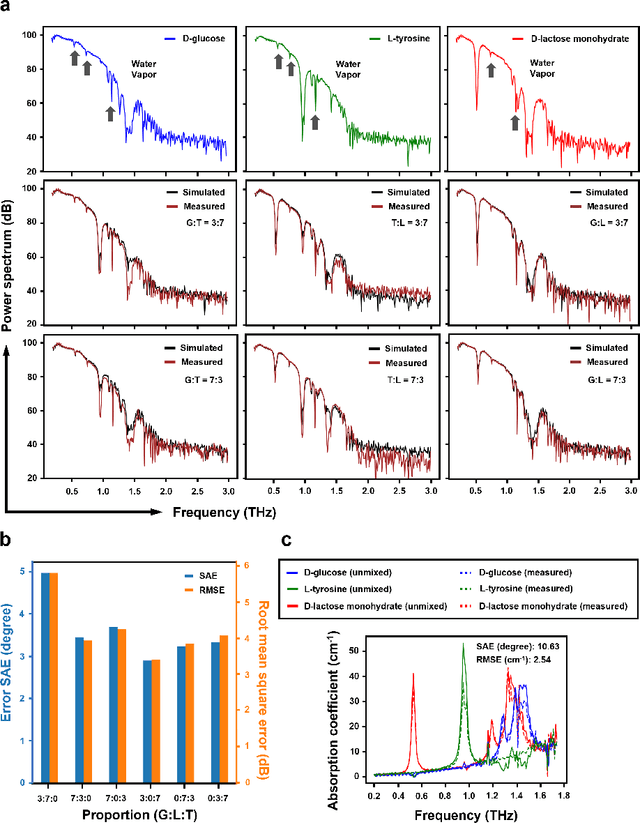
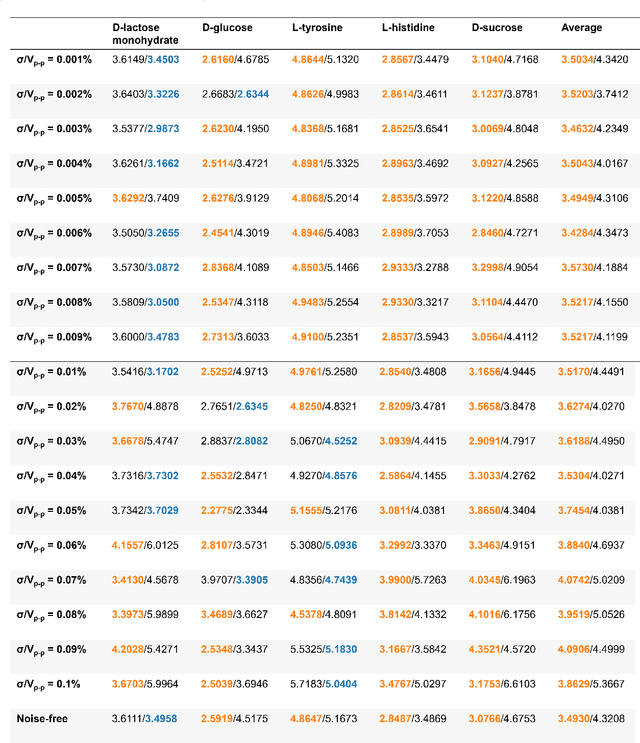
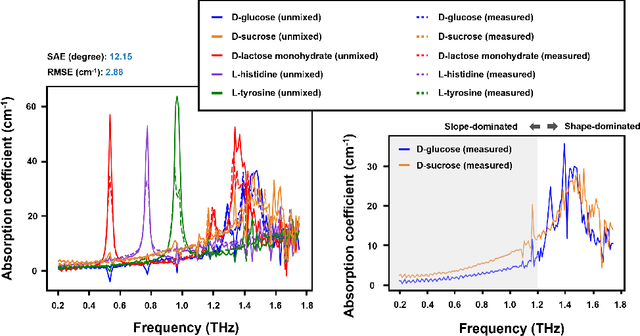
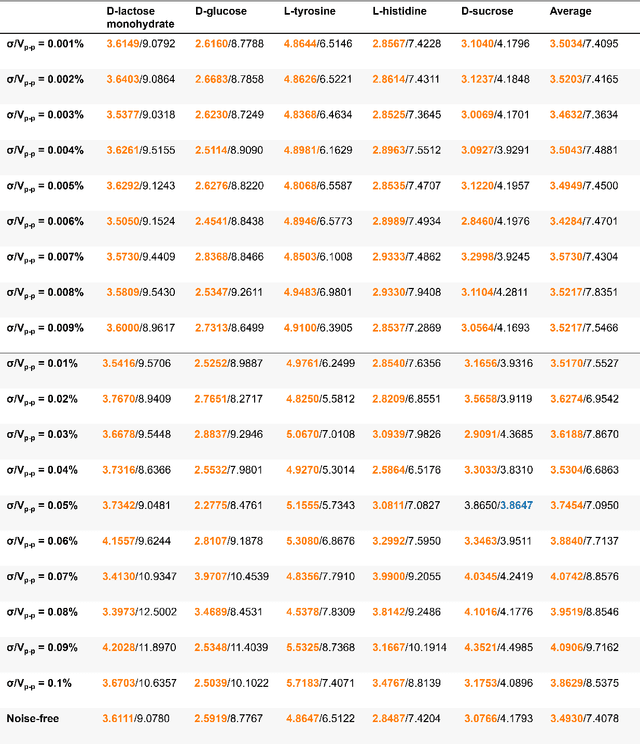
Abstract:Terahertz (THz) technology has been a great candidate for applications, including pharmaceutic analysis, chemical identification, and remote sensing and imaging due to its non-invasive and non-destructive properties. Among those applications, penetrating-type hyperspectral THz signals, which provide crucial material information, normally involve a noisy, complex mixture system. Additionally, the measured THz signals could be ill-conditioned due to the overlap of the material absorption peak in the measured bands. To address those issues, we consider penetrating-type signal mixtures and aim to develop a blind hyperspectral unmixing (HU) method without requiring any information from a prebuilt database. The proposed HYperspectral Penetrating-type Ellipsoidal ReconstructION (HYPERION) algorithm is unsupervised, not relying on collecting extensive data or sophisticated model training. Instead, it is developed based on elegant ellipsoidal geometry under a very mild requirement on data purity, whose excellent efficacy is experimentally demonstrated.
 Add to Chrome
Add to Chrome Add to Firefox
Add to Firefox Add to Edge
Add to Edge